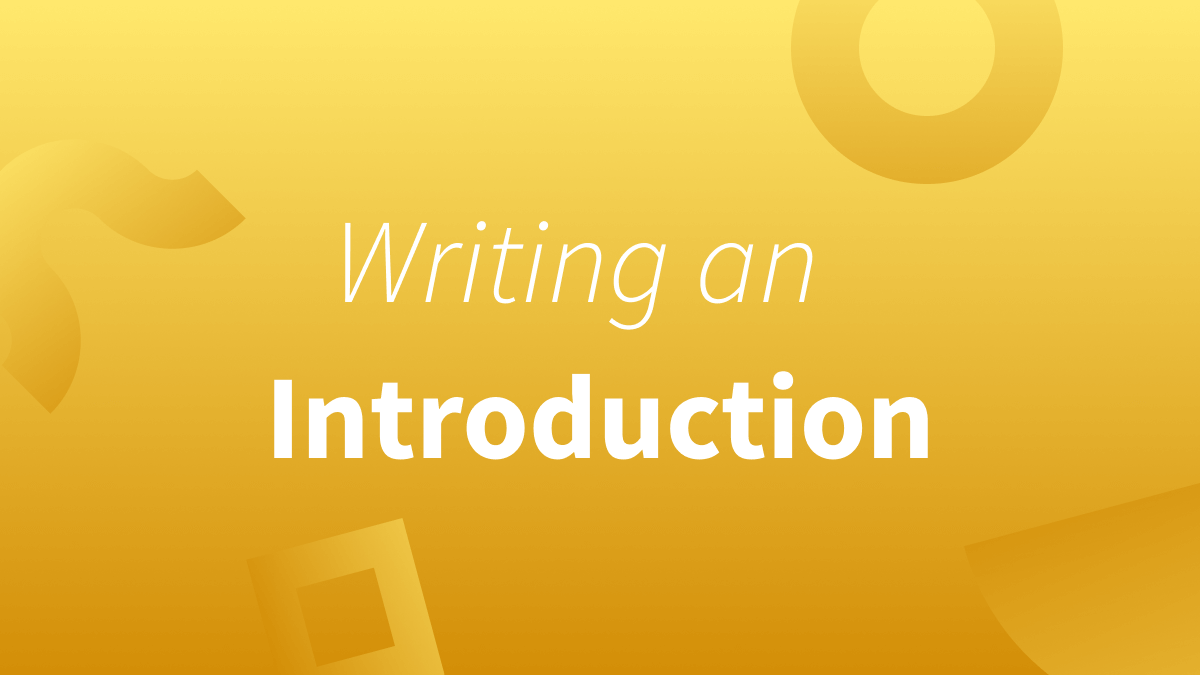“You never get a second chance to make a first impression.” —Will Rogers
This holds true in writing, too. Whether you’re writing a letter, a blog post, or a research paper, writing an introduction is one of the most crucial parts of the writing process. It’s the first chance to show your audience that what you’ve written is worth reading.
Below, we’ll share five easy tips on how to write a good introduction.
1) Narrow the Scope of Your Topic
The first tip to help you write a good introduction is to be used before you start writing, and it’s to narrow the scope of your topic. In other words, instead of writing about an overgeneralized view of a topic, find a unique and specific angle.
Interesting Birds
Interesting Birds of the Amazon Rainforest
2) Hook Your Reader
Pizzazz! It’s all about pizzazz!
Hook your reader with an interesting fact or an unusual perspective. You could also use an exciting anecdote or a funny play on words. Whatever choice you make, the point of the hook is to entice your audience to keep reading.
3) Tell Readers What You’re Going To Write About
Don’t keep your readers in suspense. If you don’t get to the point and tell your audience what exactly they can expect from your writing, chances are they will move on and read something else. In other words, don’t wander with your writing. Get to the point quickly before your reader gets distracted.
I sat in the tent, drinking my warm coffee. It didn’t taste very good, but I drank it either way out of habit. After the last sip, I put on my muddy, down-to-the-last-thread boots, unzipped the tent, and went on my way. An intense, hot, humid air immediately filled my lungs.
There’s no better way to learn about the birds of the Amazon than by immersing myself and living among them for five weeks straight. That’s five weeks living in the jungle to be able to teach you what I discovered about these awe-inspiring animals.
It’s important to note that the first introduction may suit you better if you’re writing a creative story-telling piece. But writing that revolves around sharing interesting facts and information might work better with the second introduction. It all depends on you as the writer and the information you wish to convey.
4) Be Honest
Don’t make promises you can’t keep. Writing an introduction means setting a certain expectation and then reaching it. If you start your introduction with a complex question, you should use the rest of your text to answer it. Don’t tell your readers you’ve discovered how to end world hunger if you don’t have the answer to that.
I’ve discovered a species of dinosaur that is still alive today!
Avoid “clickbait,” as it is sure to hurt your reputation as a writer.
5) Set a Tone
Continuing on the preceding “be honest” tip, a good introduction means the writer has accurately set the tone for the rest of the text. Don’t confuse your reader with a sudden and jarring tone shift. For example, if you start your introduction with a sense of urgency, don’t suddenly switch to a matter-of-fact tone.
Writing the Perfect Introduction
The writing process is different for everyone. Maybe you have your own guidelines when writing a good introduction. Or you’re writing a creative piece and noticed that doing the opposite of one of these tips creates the exact effect you’re looking for. Perfect!
But if you’re unsure about how to write an introduction and need some guidance, keep these tips in mind. And here’s a bonus tip: Use LanguageTool as your writing assistant. This multilingual text editor will help you write a perfect introduction (and the rest of the text) by correcting spelling and grammar errors, providing synonyms, and offering formatting improvements.

